Dubai Expo 2020 to welcome Global Tourism Resilience Day
The first ever Global Tourism Resilience Day is set to be launched at Expo 2020 Dubai by Jamaica minister of tourism, Edmund Bartlett. The event is scheduled for February 17th.
When I left you last, I was facing a clear dilemma.
After nine months spent basing myself in Melbourne, it was finally time for me to leave Australia. Without a home to return to, however, that meant that it was time to travel again. And with Omicron charging its way around the world, Dave and I found ourselves with quite the predicament on our hands.
Pre-pandemic, we would have had so many options to choose from: island-hopping in the South Pacific! Several months in India! Hiking in New Zealand! A California road trip! A multi-month adventure in Central America! I’d have been so excited by the prospect of heading out into the world again.
As you know, the reality is quite different.
With many countries closing their borders, experiencing soaring case numbers, and bringing in lockdowns, the mere thought of travel left me concerned. And confused. Entry requirements sounded onerous (if you’d like an insight into how sheltered I’ve been from the pandemic so far: I’ve never had a PCR test), reports of mandatory quarantine camps were unsettling, and the countries I most wanted to travel to had a habit of closing their borders within minutes of me buying flights.
Just how enjoyable is travel even going to be at this time? There’s a reason why running this site has been draining my savings for two years and it’s because hardly anybody is travelling internationally right now. Because travel is nothing like it used to be (presumably).
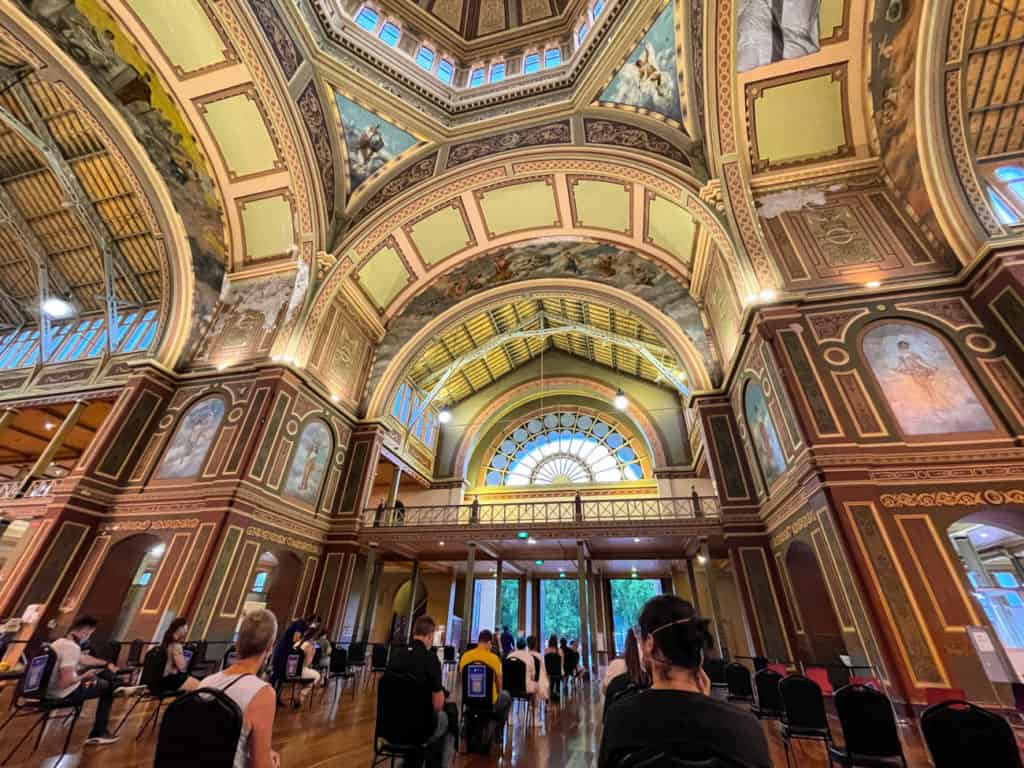
First things first: I needed to get my third vaccine dose. I didn’t want to leave Australia without the maximum protection possible, so that was one of the first things on my agenda for the month.
I received my second dose of Pfizer back in October, so once I hit the three-month mark, I ventured over to the Royal Exhibition Building here in Melbourne and spent a sunny two hours queueing for my jab.
I was given a choice of Pfizer or Moderna, actually, so I went with Moderna to mix things up. As always: very few side effects; the main one being an enormous serving of relief.
With that task out of the way, it was time for Dave and I sit down and make a huge decision.
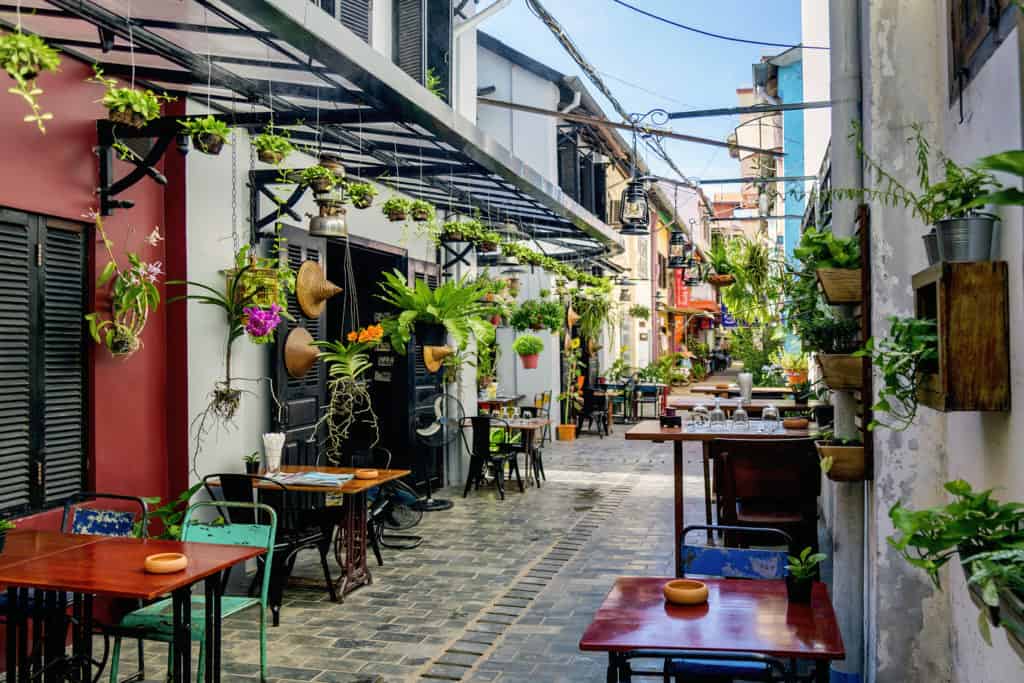
In my previous monthly summary, I revealed that I was torn between travelling to one of two appealing options. To quote from that article:
Top of our list right now is Mexico. We love Mexico and have wanted to return for years. We could spend our time on the beaches, living outdoors in these pandemic times, downing every margarita and devouring every taco that crossed our path. The main downside is that it would require 28 hours of travel to get there — would it be worth the hassle and stress? On top of that, there are reports that Mexico is currently cracking down on long-term travellers; some people are now being given a seven-day visa at the border! What would Dave and I do if that happened to us?
There’s one other destination that’s at the top of our list: Cyprus! It makes a lot of sense for me and Dave. Firstly, we’re planning on spending our summer in Europe. And this pesky little thing named Brexit means that I’m now subject to the rules of the Schengen Zone. Cyprus is not part of the Schengen Zone, so wouldn’t eat into our allowed 90 days in the EU. Cyprus has warm, balmy weather year-round, so we wouldn’t need to worry about being too cold. And it’s cheap! It offers up good hiking, delicious food, and beaches and ruins galore! The downside is, as with Mexico, it’d take 28-odd hours to get there.
Beyond that, we don’t have too many other options. Thailand and Indonesia are running mandatory hotel quarantine, which I don’t want to go through again. Singapore, Malaysia, Vietnam, and Taiwan have closed off to tourists. Cambodia is letting tourists in, but only on a 30-day visa. The South Pacific islands are mostly closed to tourism or only issuing 30-day visas. Other non-Schengen countries in Europe would be too chilly in January/February. I don’t fancy hitting up the U.S. right now.
I turned the question around to you guys and asked where you thought I should go.
Some thought I should stay in Australia longer to make the most of being in this country while international tourists can’t get in; the biggest attractions would be crowd-free! It would be a once-in-a-lifetime opportunity to see them that way. The Great Barrier Reef or Uluru with hardly anybody there? Sounds amazing!
Others recommended Mexico. Lots of you guys are heading to Mexico right now, in fact! You recommended it for the great weather, delicious food, lack of entry restrictions on travellers, and ability to spend most of my time outdoors.
And some thought Cyprus sounded like the perfect fit. In particular, you thought that the risk of being granted a seven-day visa upon arrival in Mexico was too high and wasn’t worth taking a long flight for. Others thought the chances were low: I haven’t been to Mexico since 2016, so I’m not the type of tourist they’re cracking down on. But most of all, you would love to read about what it’s like to live in Cyprus, which is predicted to soon become a digital nomad hotspot.
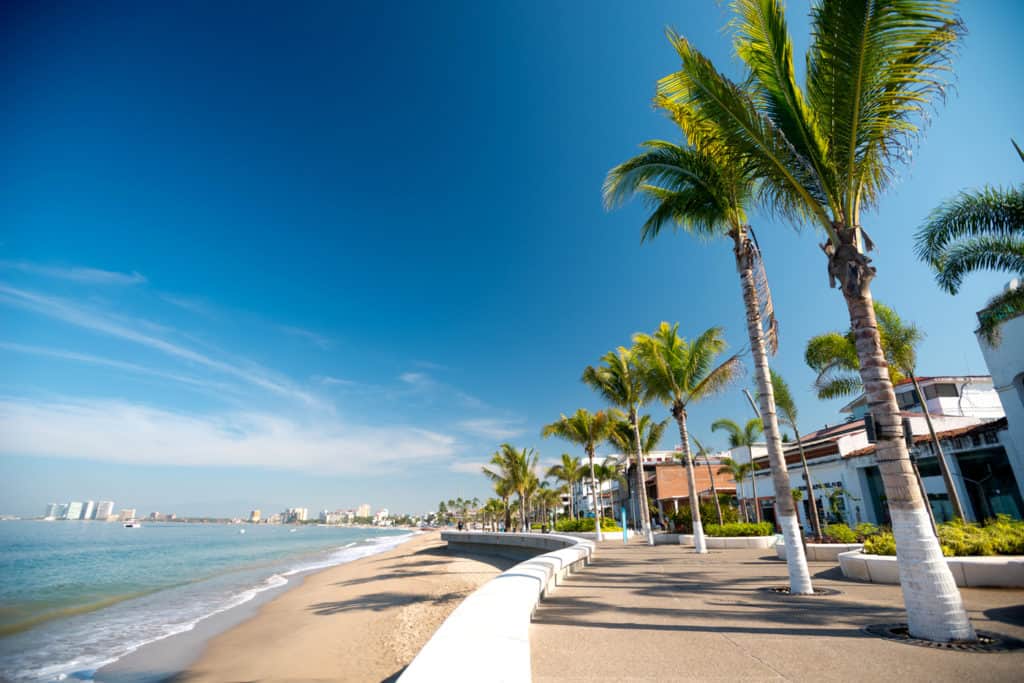
After deciding we wanted to leave Australia but that we couldn’t take the risk of being given a seven-day visa for Mexico, Dave and I committed to head to… Cyprus! It felt like the best decision for our particular situation. We could spend two months basing ourselves on the island before venturing into mainland Europe.
Decision made. What a relief!
Now.
I dedicated a significant part of last month’s summary to talking about how every single time I make a decision to travel somewhere, my country of choice would respond by closing its borders. It’s happened half a dozen times over the past year!
And so it felt so hilariously ridiculous to discover that days after making our decision to head to Cyprus, Europe redefined Australia as a “COVID danger zone”, which essentially meant that EU countries decided they were going to ban Australians from entering[!!!!!!!!] I couldn’t stop laughing at the news, to be honest. Deliriously laughing. At this stage, I’ve come to expect that every time I book flights, I’m going to end up cancelling them within 24 hours.
Fortunately, Cyprus, Greece, and Italy decided to stand out from the crowd and still permit people to travel there from Australia.
This time, we were going to be okay.
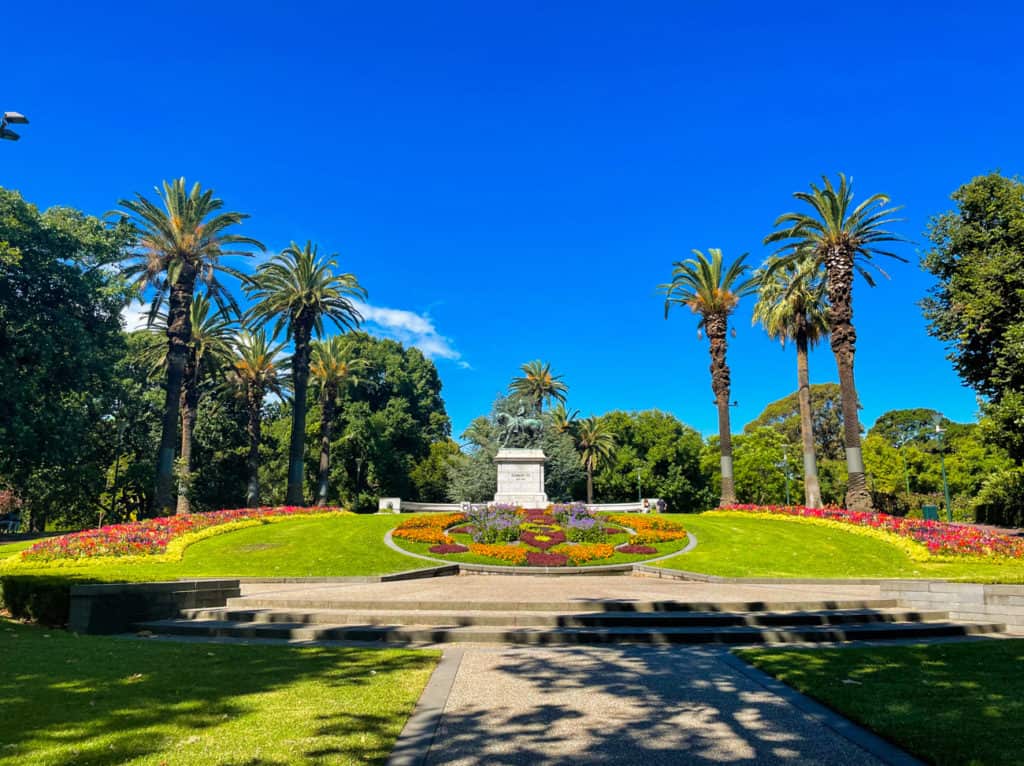
Like many countries around the world, Australia was hit hard by Omicron this month. After several months of holding steady at 1,000 cases a day here in the state of Victoria, numbers soared to 40,000 daily cases in early-January. At that point, Australia had more cases per capita than both the UK and the US!
(It’s not really surprising that this happened; after keeping COVID out for so long, we have basically no natural immunity here.)
But as with seemingly every Omicron wave, we peaked within two weeks, hospitalisations remained low, and as I write this now, Victoria is down to around 10,000 cases a day.
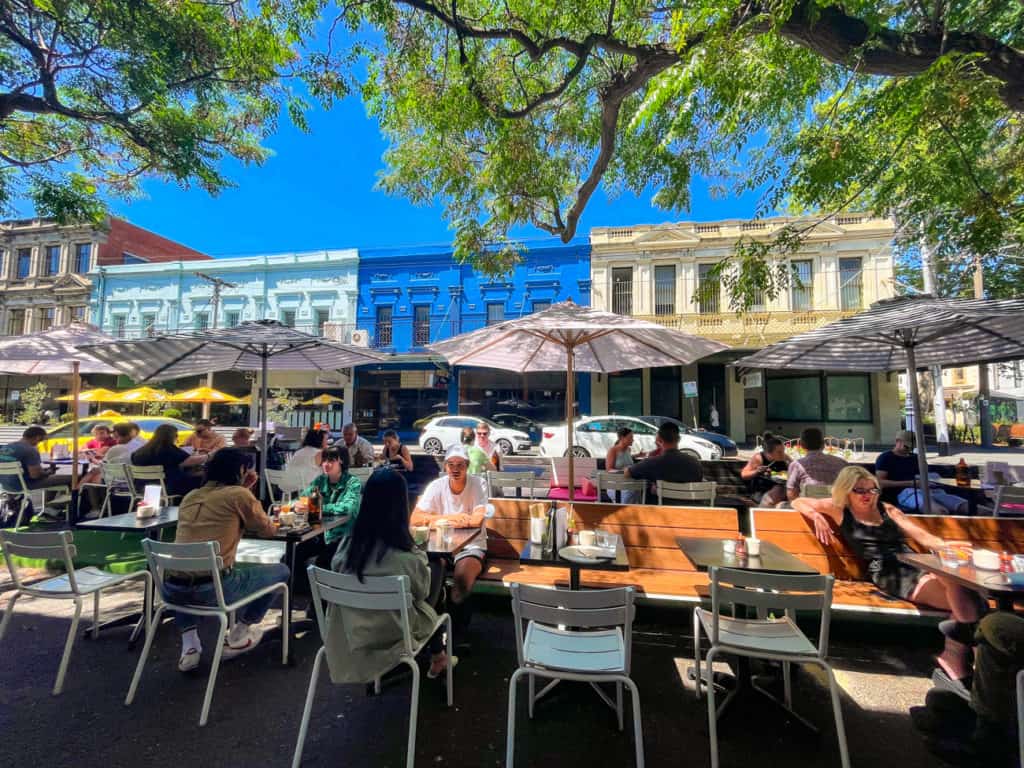
If I had to describe how I spent the first month of 2022, it would be on my feet.
I recently took steps to work on some foot pain I’ve been experiencing on multi-day hikes; one solution I’m trying is custom orthotics.
And what that means is that I needed to spend the entirety of January making sure they were a good fit. There was the breaking-in stage, where I’d walk for an hour a day for the first three days, then extend that to 90 minutes a day for the next three days. Before I knew it, I was having to walk five hours a day, every day, to see if I could replicate the pain I’ve experienced in the past.
My least favourite day was when I had to walk around a park for four hours in 35°C (95°F) heat.
With so much travel on the agenda for the entirety of 2022, I would have preferred to have spent my time working rather than walking aimlessly around Melbourne for hours and hours. Alas! I needed to do it now, as I’m leaving the country soon. If the orthotics needed an alteration, I needed to know as quickly as possible.
Overall, though, as annoying as it was, I enjoyed having an excuse to get outside, explore more of the city, and stop working so much. And so far, so good! I’m still experiencing pain when walking, but it’s nowhere near the levels of agony I used to get.
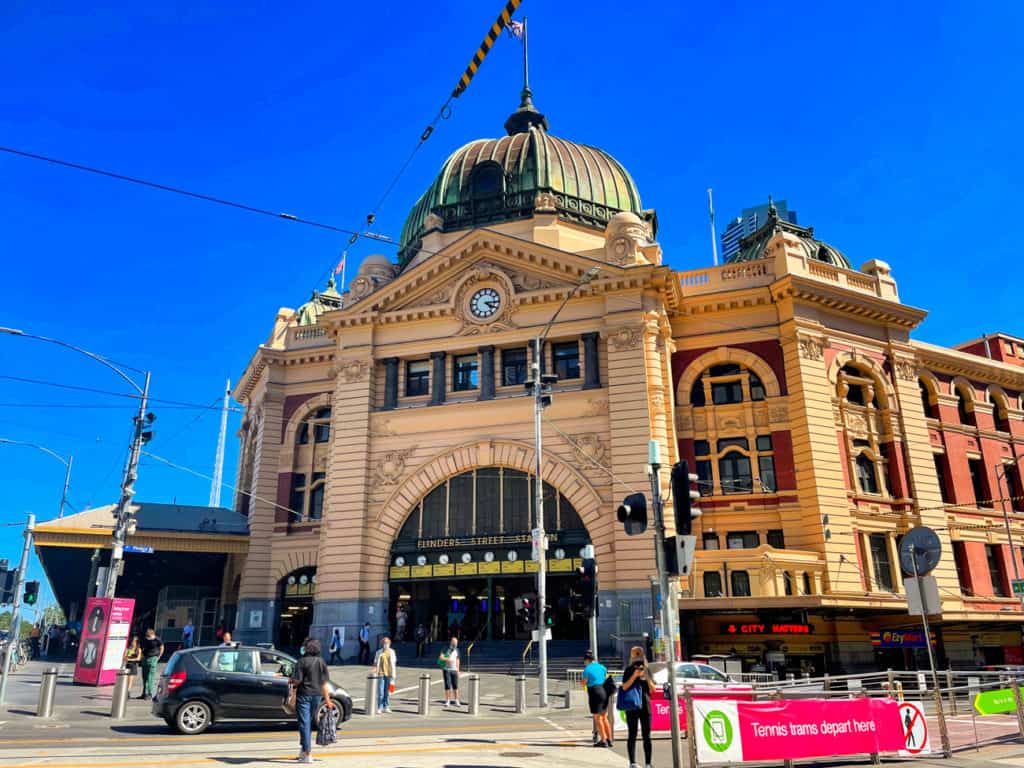
One morning, Dave joined me on a walk around our local park. It felt like a good excuse to get some trip planning done. We needed to book our flights to Cyprus and figure out a plan for our two months on the island.
Which would be the best flight to take? How would we book our pre-departure tests? What would we need to do on arrival? Was Paphos the best place to base ourselves? What would happen if we tested positive on arrival? What would our travel insurance cover us for?
We made our first circuit around the park, during which we half-heartedly came up with some ideas and suggestions. If I’m being honest, neither of us were feeling particularly enthusiastic about the trip. We knew we wanted to leave Australia and we had to go somewhere, but it all felt so complicated and stressful. A masked-up 28-hour flight, multiple layovers and airports, and three COVID tests: not very appealing.
Life had become so comfortable in Melbourne, and travel had become so difficult, so we continually found ourselves wondering: was this really the best decision for us?
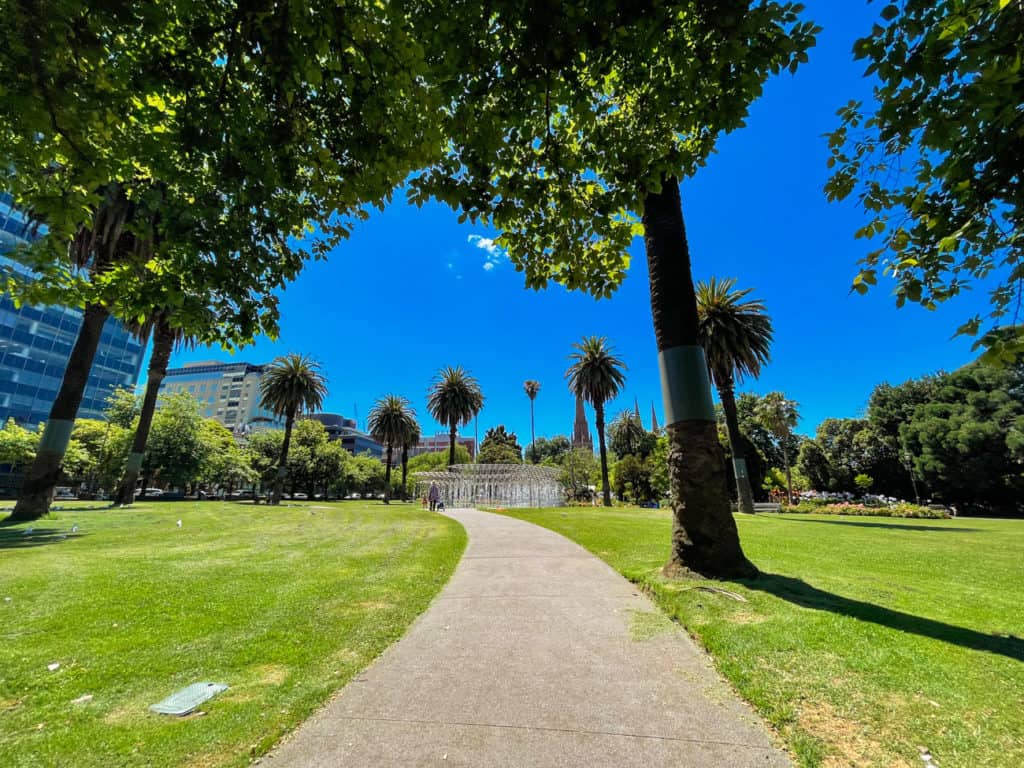
“Ugh, shall we just go to Cambodia instead?” I joked, letting out a heavy sigh.
“Maybe.”
I stopped in my tracks. “What?”
“What?” Dave shook his head. “Oh, did I say that out loud? I mean, yeah, Cyprus sounds great.”
“Are you joking?” My mind was spinning. “About Cambodia?”
“Yeah. Of course.”
“… But are you really?”
“I think so?”
“I mean… the flights would be shorter, right?”
“Yeah. And, um, well, we’d be in Southeast Asia.”
We continued to make our way along the trail in silence, both of our minds travelling down a thousand paths at once.
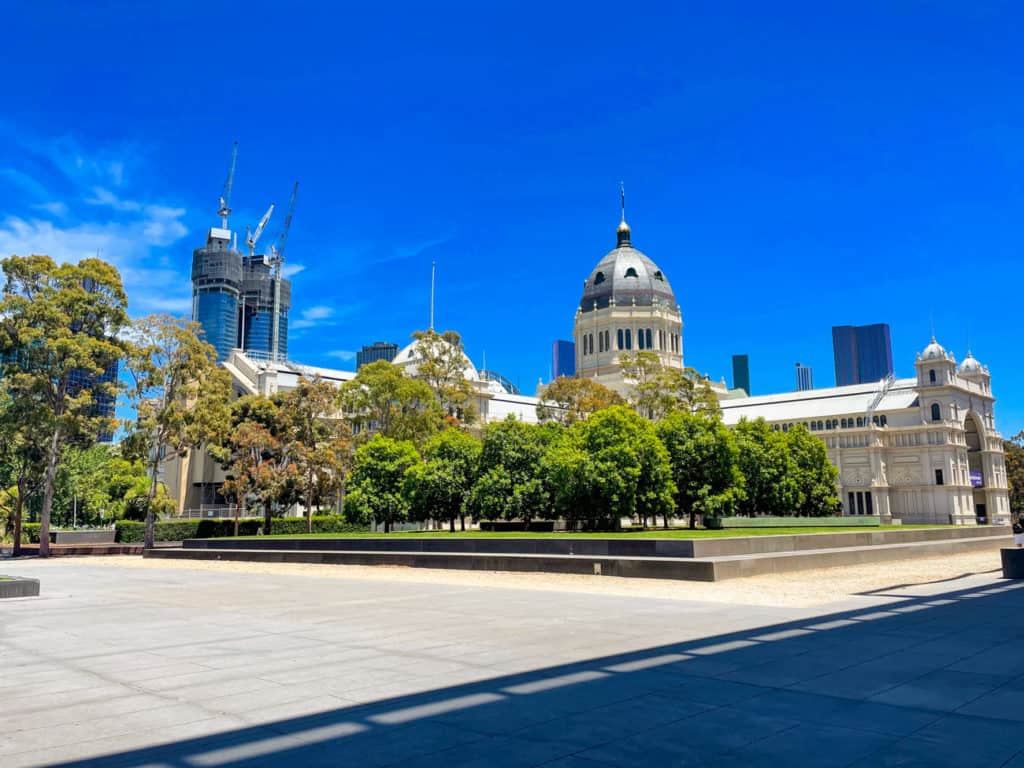
“Thailand’s restarted Test&Go,” Dave said eventually. “No more quarantine or restrictions on movements for arrivals. Just a test on day one and day five and you’re free to do anything you want in-between.”
I groaned.
“Dave. I can’t tell my readers I’m going back to Thailand. We always go to Thailand. It’s going to be like, the least shocking announcement ever.”
“We could have a month in Cambodia, then a month in Thailand. Maybe two months in Thailand?”
I shook my head. “We can’t keep changing our plans like this. I’m all over the place. First, we’re going to New Zealand. Then we were going to Thailand. Then Mexico. Then Cyprus. And now Cambodia? All in the space of a month! I’d only just come around to the idea of Cyprus. That was supposed to be the plan. And now I have to scratch that and cancel everything and…”
“We don’t have to go. I wasn’t being that serious. We’ll go to Cyprus.”
“Yeah. I think it makes the most sense.”
Much of January was spent having similar conversations, never knowing if we were making a terrible decision or should be changing our minds. Typically, when Dave and I plan a trip, it feels right and we’re convinced we’re heading to the right place at the right time.
This time around? Those feelings were noticeably absent.
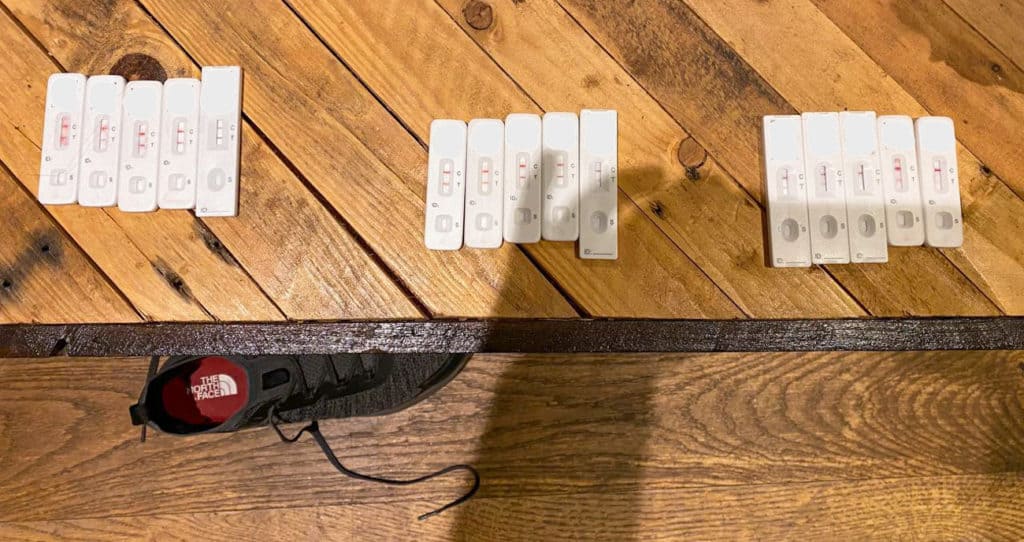
My entire family caught COVID this month.
It was the strangest feeling.
My mum sent me a message warning me not to panic, then revealed my dad had just tested positive. In some respects, it wasn’t a surprise, because he’s been heading out to crowded football games for months. I’d been joking about how it was inevitable and telling friends I wouldn’t be surprised if he tested positive soon, but I don’t think I fully allowed myself to believe it. Now that it was actually happening, I suddenly felt emotionally unprepared for handling the stress of it all.
My dad was the first person in either mine or Dave’s family to catch COVID, which made it all the more unsettling. Unlike most people, we don’t know dozens upon dozens of people who have contracted it and recovered. We knew that Omicron was mild, but when it’s your parents who have it, it suddenly feels real and worrying. I contemplated worst-case scenarios and wondered if I’d be heading to London instead of Paphos.
My family, on the other hand, were blasé. Pretty much everybody they know in the U.K. has caught COVID by this stage, so they were treating it as no big deal.
And you know what? They were totally fine. The following day, my mum tested positive, and then my sister did a few hours later. They isolated together, reassuring me regularly that they really did feel fine. A mild cough, a touch of congestion, and a round of negative tests 10 days later. They’ve all had worse colds than Omicron.
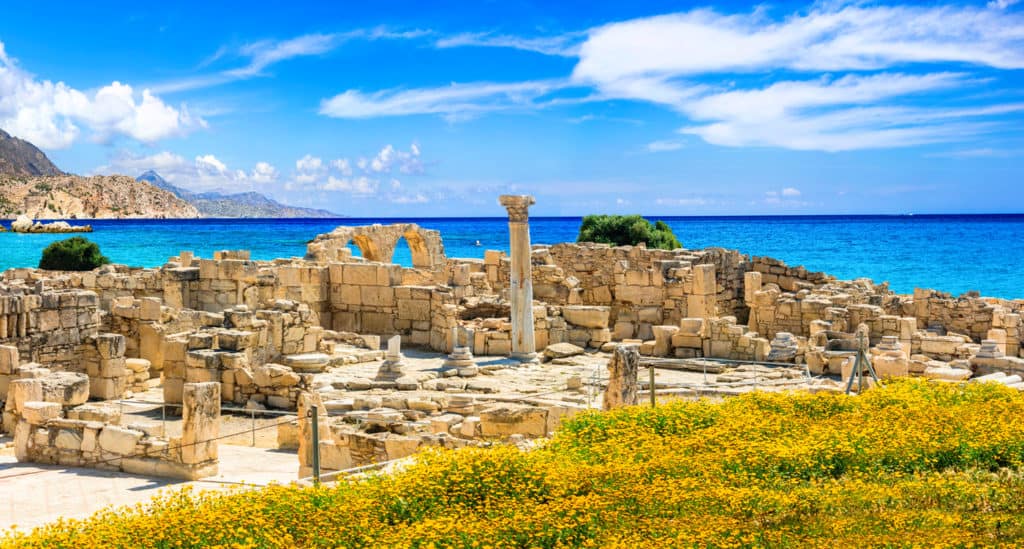
“Why don’t we go to Cambodia for a month and then Cyprus for a month?” I suggested one morning, and that suddenly felt like the best of both worlds.
We messaged a friend who was currently travelling in Southeast Asia and he encouraged us to take the leap. He told us how Cambodia was free of tourists, interesting to explore right now, and reassured us that everyone was taking COVID seriously: masks are worn everywhere; Phnom Penh is the most vaccinated capital city in the world. Cases were low (30 or 40 a day; 0 deaths), entry requirements were simple (a single rapid test on arrival), and total flight time would be 11 hours from Melbourne. Imagine Angkor Wat without the crowds.
Tempting, tempting.
Dare I even say it felt right?
And yet it still took us weeks to make a final decision. To pull the trigger and buy some flights.
Every time we thought about leaving, we were filled with uncertainty. Maybe it’s Stockholm Syndrome, but we’ve spent so much time in Melbourne, and been through so much with the residents of this city, that we’ve built a deep connection to this place. It feels like home and it feels comfortable. We’ve created a life here, are surrounded by friends, have our favourite cafes and restaurants, and our regular walking routes.
Who would want to disrupt that?
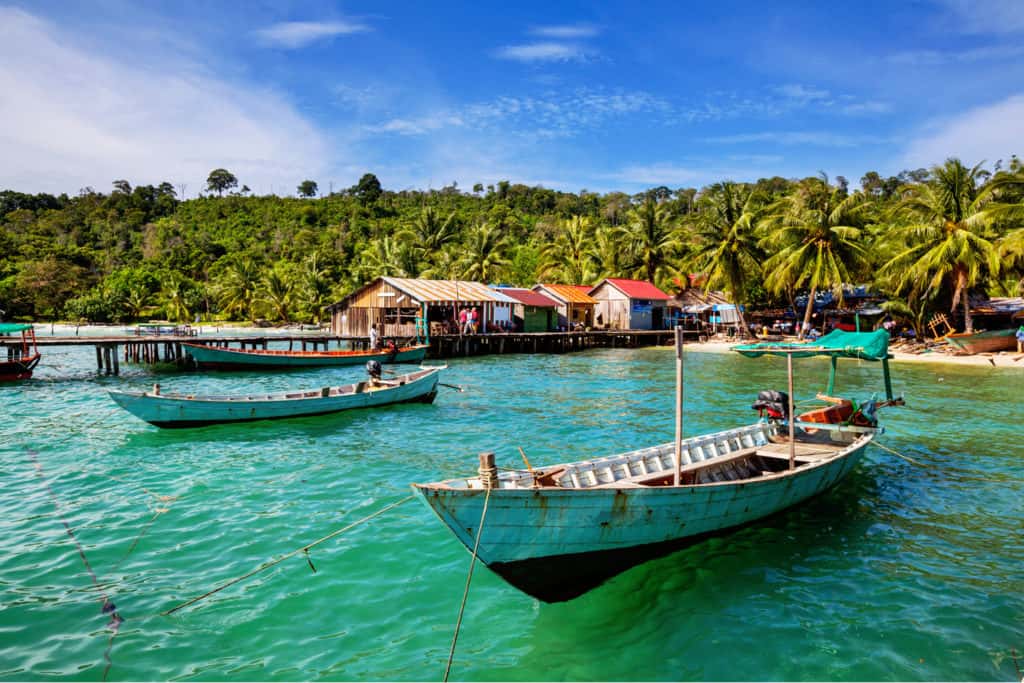
But the clock was ticking and a decision needed to be made.
And so, Dave and I picked a country. We applied for our visas, bought our flights, and booked our first week of accommodation.
It was finally official: we were flying to Cambodia.
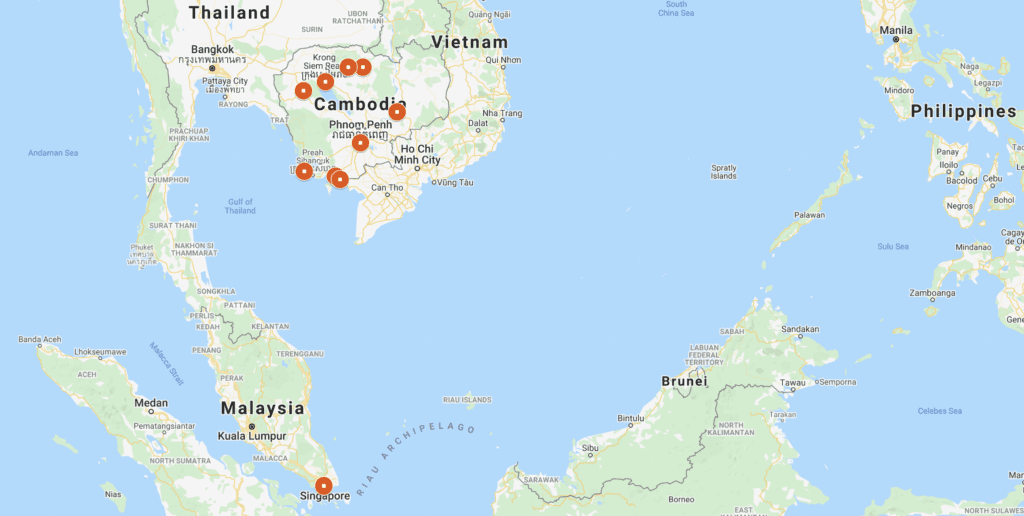
You may have noticed I’ve stopped publishing new blog posts on Never Ending Footsteps over the past year or so. With the exception of my monthly summaries, I’ve shared close-to-nothing about either my previous or current travels. For that, I must apologise.
It was, however, a deliberate decision. A necessary decision. One made through desperation. Due to the pandemic, and a subsequent loss of income, I can’t justify publishing travel stories right now, as they just don’t make any money. (My monthly summaries, however, are non-negotiable in my eyes. I figured that was the next best thing: to still have a place where I’m sharing what I’ve been up to and where I’ve been.)
Instead, I’ve been working hard behind the scenes. I’ve been hiring a dozen staff members, re-working every post I’ve ever written, and publishing almost 200 brand new travel articles in 2021 alone. I haven’t shared any of them publicly, as they’re generic resources and mostly written by other people.
I’m hoping the time, effort, love, and money that I’ve poured into my site will soon start to pay off. Hopefully that, combined with a trip to places that excite me, will renew my inspiration and have me publishing here again: writing some posts for you guys rather than just for Google. I’ve already experienced a 40% uptick in income for January.
All that to say: tomorrow, I’m going to be publishing a blog post detailing my travel plans for the rest of the year! A new article! And because of that, I’m not going to share a detailed look of where I’m going to be going in February right now — I’ll share all of that tomorrow. But you can see the map: I’ve got tons of ideas for my time in Cambodia.
I can tell you that I’m going to be leaving Australia in less than a week. And I can tell you that I’m now in the midst of another stretch of self-isolation. I absolutely cannot test positive when I arrive in Cambodia — the quarantine facilities are appalling (and despite what the article claims, are still operating) — so I’m basically not going to see another person during the 10 days before my flight.
And then, I’ll be off.
My friends, it’s finally time for me to leave Australia.
Yes, it’s time to get my travel on.
The post January 2022: Monthly Summary and Upcoming Travels appeared first on Never Ending Footsteps.
EFor decades, radiators have been the go-to choice for heat emitters in the home. However, in recent years, this traditional solution has faced stiff competition in the form of underfloor heating (UFH). Sparking the question underfloor heating vs radiators – which is better? We explore the pros and cons of both.
In the battle of underfloor heating vs radiators, there are further considerations to bear in mind, including ease of installation and design practicalities. Plus, it’s important to understand that there is no ‘one size fits all’ approach when it comes to heating your home.
‘There’s a whole raft of benefits that come with switching to a correctly specified UFH system,’ says Tom Edmunds, general manager at Wunda. ‘A major benefit and deciding factor in switching is efficiency which, in turn, leads to cost-savings.’

Image credit: The Radiator Centre
Here, we break down what you need to know when it comes to updating your heating system: should you choose underfloor heating or radiators?
This type of heating transforms your home’s floors into a radiant heat emitter. There are two types of underfloor heating: water-based (hydronic) and electric underfloor heating systems. A warm water system features a network of tubes laid beneath the floor surface. When the heating is switched on, warm water circulates through the pipes to warm the floor above.
An electric (or ‘dry’) setup runs off your home’s domestic electricity supply. Heated cables, either in loose wire form or embedded into a mat, are laid beneath the flooring. When switched on, the wires warm the floor above.
Typically made from cast iron, steel or aluminium, most modern radiators comprise two panels, connected by a top grille and side panels. Convector fins are fitted between the two layers, creating a flow of air that spreads heat throughout the room.
;This type of emitter warms the air surrounding it via convection,’ says Sarah Wazir, a marketing executive at Warmup. ‘The air that is heated by the radiator ascends towards the ceiling. Once the air has cooled, it travels back down to be reheated by the convection of the radiator. This creates a flow of warm and cool air around the room.’

Image credit: Future PLC
Installing a new radiator is straightforward, as it simply needs to be fitted to the wall. If you’re switching existing units for like-for-like replacements, the job shouldn’t take a professional more than a couple of hours. Plus, once all the connections are secure, your new radiator is ready to go.
If you’re fitting completely different units (e.g. a vertical unit instead of conventional horizontal design), extra thought may be required in terms of planning the room layout around the position of your radiator and to ensure it’s in the best spot to warm the space.
Fitting underfloor heating can be trickier, depending on the scenario. ‘In a new build, installing underfloor heating is relatively straightforward, as it can be added before the final flooring or screed level goes in,’ says Nick Duggan, director at The Radiator Centre. ‘However, retrofitting UFH to an existing floor can prove costly, messy and time consuming as you might need to dig up the floor.’
Electric UFH systems are easier to install than water-based setups – a competent DIYer could probably do it in some scenarios. With a water-based setup, you’ll need to allow enough space for the pipework to be installed without too great a height build-up. Various slim, low-profile hydronic systems are available for retrofit scenarios.
However, the sub floor will still need to be adequately prepared. In some cases, you might be waiting weeks for the screed layer to dry out before you can lay the floor finish over the top. At that point, the underfloor heating should only be turned on gradually and the temperature increased incrementally so that the flooring above can acclimatise.

Image credit: Future PLC/ David Giles
When comparing the efficiency of radiators to underfloor heating, there’s a couple of key factors to note. One is that underfloor heating works at a lower flow temperature (around 35°C) than radiators (70°C -90°C). ‘This means that underfloor heating systems can run from an existing boiler and you will make savings due to the low temperature of water required,’ says Tom Edmunds from Wunda.
If you’re pairing your underfloor heating with a heat pump (which also works most efficiently at a low flow temperature, ideally suited for UFH), you’ll boost how efficient your underfloor heating system is even more.
‘The way the heat is distributed by the emitter also impacts on your system’s efficiency and comfort,’ says Sarah Wazir from Warmup. ‘Radiant warmth [ie from UFH] heats objects directly and maintains the natural humidity in the room, providing an even spread of heat. Conventional heating [ie radiators], on the other hand, warms one area initially and then takes time to circulate so the temperature reaches the desired level.’
Another important factor to bear in mind here is the thermal performance of the building fabric. If precious heat is leaking out via uninsulated walls, floors and roof, it won’t matter whether that heat was generated by radiators or UFH.
The amount you spend on utility bills per month all comes down to efficiency, which means it’s just as much about the thermal performance of your home as it is about the type of heating system you’re using.
Nu-Heat suggests that running costs for radiators and underfloor heating are generally comparable. Though UFH systems that run at a higher level of efficiency could be more than 25% efficient than radiators. This, of course, means energy (and money!) savings.
Your monthly outgoings for UFH depend on the type of system you install. While water-based systems cost more than electric UFH for the initial installation, electric systems come with much higher running costs. The same goes for electric radiators compared to those fuelled by a gas boiler – this is simply because the cost of electricity per unit is greater than the cost of gas. For more information about electric underfloor heating, head to our guide to all the pros and cons.
Robust and reliable, a radiator should provide a service life of at least eight to 10 years. High-quality, well-maintained units might not even need to be replaced for 15+ years. However, frequent use will result in wear and tear, and over time your radiator might fail to perform to its most efficient level. Flushing your system regularly can help prevent build-up of substances like rust.
The pipework for a water-based underfloor heating system should last at least 50 years. Providing the setup is well-maintained and undergoes regular professional servicing to ensure everything is in order.

Image credit: The Radiator Centre
Ask yourself the following questions:
If your home is leaking heat via the building fabric because there’s not enough insulation, it doesn’t matter whether you have underfloor heating or radiators – you’ll be wasting energy, and therefore money. If you’re planning to upgrade your heating system as part of a renovation, it’s always worth taking the opportunity to see if there is any way to boost your home’s thermal performance by packing more insulation into the walls, roof or floors.
Don’t feel that because you want to install underfloor heating in your new kitchen-diner extension and bathroom, it means you need to lay it throughout the rest of the house. In fact, a hybrid setup can work extremely well and be economical because it’s tailored to your lifestyle. For example, the radiant heat provided by UFH is perfect for living areas where you spend a lot of time. In areas like bedrooms, you could install radiators to provide a 45-minute blast of heat before bed.
Underfloor heating provides radiant heat, which keeps the movement of dust around the room to a minimum. On the other hand, radiators use convection to circulate heat around the room, often moving dust particles at the same time. Minimising the movement of dust and allergens throughout the home can be a major benefit if you suffer from any allergies or asthma.

If you own a modern, well-insulated home, underfloor heating might just have the edge when it comes to efficiency. However, if you live in an older, draughtier house, the higher output temperature of a radiator system might be the best fit. Either way, running costs will depend largely on how well-insulated your home is.
Your lifestyle also plays an important role in determining which heating solution is best. For tailored guidance, always consult a professional heating engineer who can help you craft a bespoke setup based on the unique quirks of your property.
The post Underfloor heating vs radiators – which is better? appeared first on Ideal Home.
